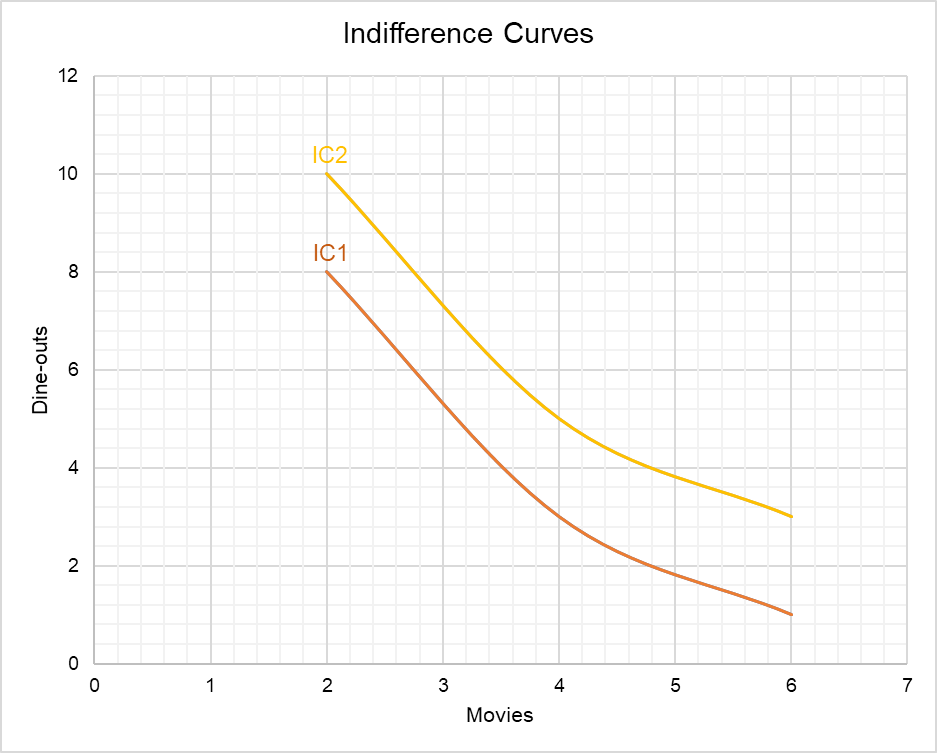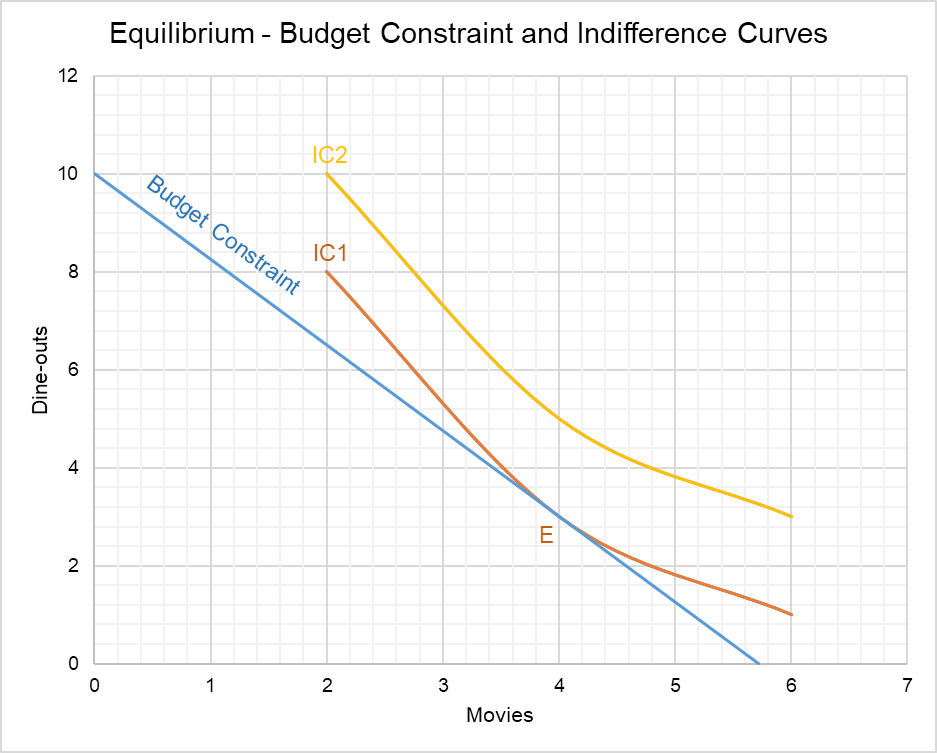An Indifference Curve Shows All
Indifference Curve
An indifference curve is a graph of different combinations of ii products to which a consumer is indifferent i.e. he likes both combinations as likely.
Let's consider Mark who wants to make up one's mind about number of dine-outs and number of movies in a month. He analyzed his consumption pattern over the last twelvemonth and found out the following: (a) if he watches two movies in whatever month, he dines out 8 times, (b) if he watches 4 movies, he dines out iii times and (c) if he watches half dozen movies, he dines out ane fourth dimension and then on. He likes all the possibilities equally and has no preference for whatsoever single combination. If nosotros plot these combinations on graph with movies on one centrality and dine-outs on the other, we would get his indifference curve as shown beneath.

Obviously, Mark would prefer to watch 4 movies and dine out four times considering this combination is meliorate than all of the current combinations. It shows that a single consumer can take more than ane indifference curve. Such a group of indifference curves that prove the equally likeable alternatives for a consumer at difference income level is called a family of indifference curves. The outermost indifference curve IC2 has higher ranking considering it offers more of both movies and dine-outs in all instances.
You must have noticed that there is a trade-off between both appurtenances, i.e. as the number of movies increase, the number of dine-outs decrease and vice versa. The rate at which a consumer foregoes consumption of one unit of measurement of one product for the other is called the marginal rate of substitution (or substitution ratio).
Properties of Indifference Curves
Following are some of import properties of indifference curves:
- The indifference curves practice non slope upwards. It is because an indifference curve shows trade-off between 2 goods i.e. one must decrease if the other increases. If we accept an upward-sloping indifference bend, information technology would hateful that consumption of both goods tin can simultaneously increase.
- The outermost indifference bend is most preferred past a consumer and the ranking decreases every bit we motility inwards i.e. towards left.
- Indifference curves do non intersect. It is considering different indifference curves represent dissimilar affluence level and an intersection would mean that the consumer is indifference between product combinations represented by the two indifference curves.
Budget Constraint and Indifference Curves
A consumer's budget constraint (also called budget line) is a directly line that shows the different combination of two products that the consumer can afford to buy.
Let's consider Mark once more. It he has a total of $200 to spend on movies and dine-outs, this is his upkeep constraint. If a pic costs $35 and a dine-out cost $20, we can determine his consumption possibilities. If he spends all his money on movies, he can afford to watch 5.seven movies (i.due east. $200/$35). Alternatively, if he spends all the $200 on dine-outs, 10 dine-outs are possible ($200/$20). This information gives us two points to draw a budget line. It tin can exist shown that the slope of indifference curve equals the price of a moving picture divided past price of a dine-out i.e. $35/$20 which in plow equals marginal utility of a picture show divided by marginal utility of a dine-out.

The point at which a consumer'due south upkeep line is tangent to his indifference curve (i.e. Point E) is the combination he consumes.
The indifference curve analysis tin can be used to explain the substitution consequence and income outcome.
past Obaidullah January, ACA, CFA and terminal modified on
An Indifference Curve Shows All,
Source: https://xplaind.com/613423/indifference-curve
Posted by: ferrarifichalfic.blogspot.com


0 Response to "An Indifference Curve Shows All"
Post a Comment